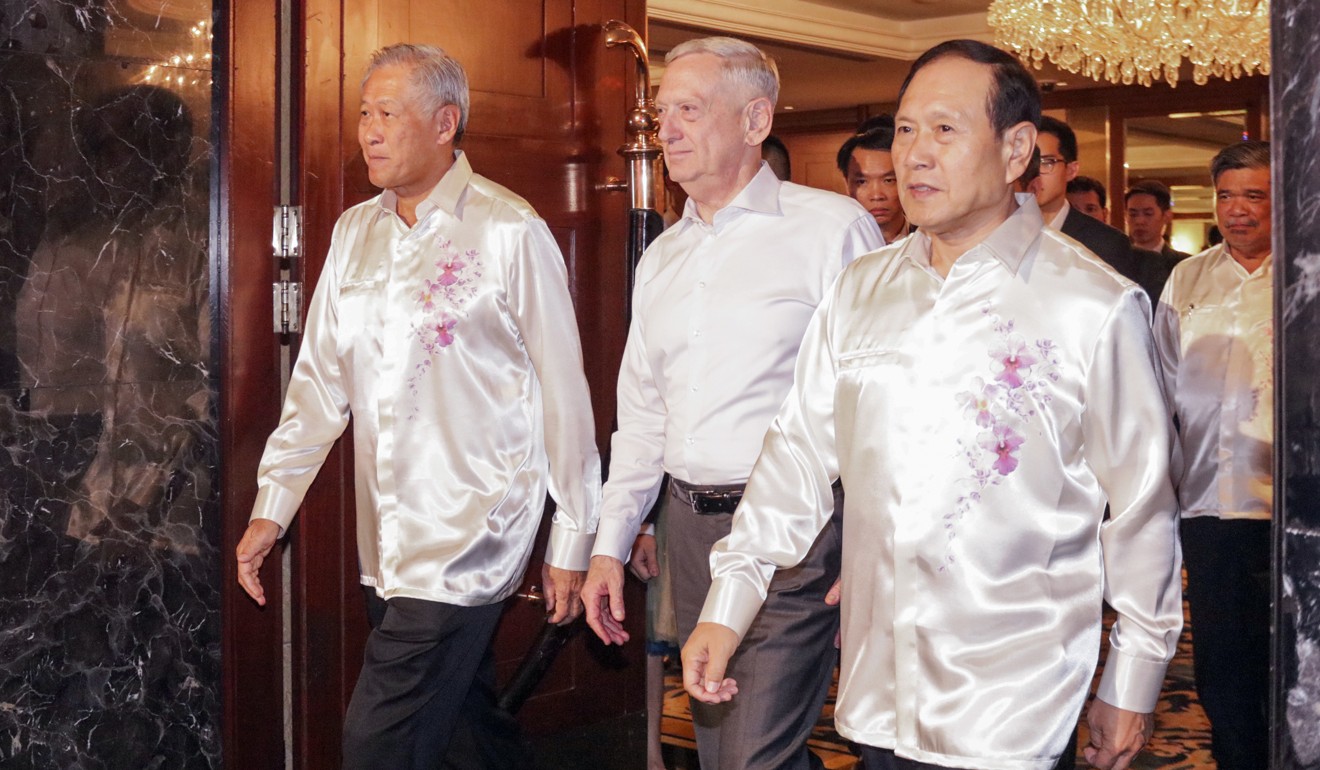
China, US defence chiefs agree to Asean rules on encounters between warplanes
●James Mattis says regional military chiefs endorsed guidelines at annual meeting in Singapore
●They encourage planes to establish communications with other aircraft, clearly identify themselves and avoid manoeuvres that could provoke a response
Defence chiefs from the US and China agreed in principle to guidelines on encounters between warplanes, in the latest bid by Pacific nations to keep increased military activity from unintentionally escalating into conflict.
US Secretary of Defence James Mattis said he and seven other regional military chiefs, including China’s General Wei Fenghe, gave broad endorsement to the rules in Singapore on Saturday, during an annual meeting hosted by the Association of Southeast Asian Nations. The non-binding guidelines had been formally adopted a day earlier by defence ministers from Asean’s 10 member nations.
US and Chinese air forces urged to sign up to South China Sea guidelines after Asean states agree on code of conduct
The document, which follows similar guidelines on naval encounters signed in 2014, encourages military planes to establish communications with other aircraft, clearly identify themselves and avoid manoeuvres or gestures that could provoke a response. “These guidelines will help reduce the likelihood of encounters or incidents spiralling into conflict in the event of a miscalculation,” it said.
The 18-member Asean-Plus Eight Partners also includes Australia, India, Japan, New Zealand, Russia and South Korea. The full grouping could formally adopt the air encounter guidelines during next year’s Asean meetings in Thailand.

The rules represent the latest attempt to manage a surge in military activity in the western Pacific as China extends its naval and air reach. The US – the region’s dominant security power since the second world war – has stepped up its presence to assert free navigation rights in the South China Sea and other waters claimed by Beijing.
Mattis has sought to play down military disputes with China during the trip, which included a 90-minute meeting on Friday with Wei. While Wei reaffirmed Chinese concerns about the South China Sea and Taiwan, the two sides agreed to deepen trust and let military ties play a stabilising role in the relationship, according to the country’s defence ministry.
Tokyo to invite Asean air force officers to watch Japan’s military training
The US and China have in recent years complained of tense mid-air encounters, with each side accusing the other of endangering its aircraft and personnel. The US has also accused China of targeting its pilots with lasers, something specifically discouraged by the Asean guidelines.
The rules seek to build on the 2014 agreement signed by 21 nations on naval protocols, known as the Code of Unplanned Encounters at Sea, or CUES. Earlier this month, the US accused China’s navy of “unsafe and unprofessional” conduct after a Chinese destroyer manoeuvred close to the bow of an American warship near a disputed South China Sea reef.

